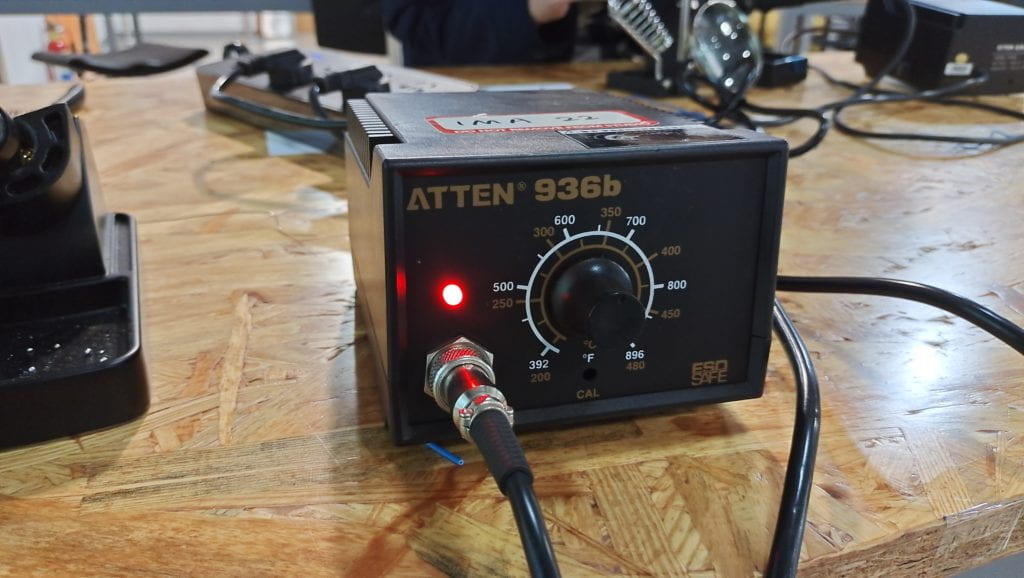Recitation 1: Electronics & Soldering
Friday, September 16, 2020
by Wendy Shi
Goal: get familiar with lab rules, tools; practice building circuits. Understand interactivity from hands-on experience.
Soldering
Soldering is a joining process used to join different types of metals together by melting solder. Solder is a metal alloy usually made of tin and lead which is melted using a hot iron. The iron is heated to temperatures above 600 degrees Fahrenheit which then cools to create a strong electrical bond.



Circuit 1: Door Bell
This is a video displaying how it comes out:
The capacitor saves the loads, keeps from an explosion(or a short circuit!)
Circuit 2: Lamp
By the same token, I built circuit 2. This time I connected the positive and negative opposite. But I switched the ends and it finally worked.
Circuit 3: Dimmable Lamp
This one is easier to build, but hard to see:
Improvement
May try pay more attention to layout on the breadboard, on the premise of successful connection.
Discussion
Question 1
In The Art of Interactive Design, Crawford defines the term interactivity as a game in which the two participants both contribute to promoting the progress by actively transform the outputs into inputs, in other words, keep the system run.
In the circuits I built today, when I push the switch button, the door bell rings, the lamp lights up and the dimmable light blinks intermittently, when I move away they go off, each gives a response to the signal I sent to them, and I also have a reply accordingly(either excitement or disappointment). I think this may be the simplest form of interactivity: expecting “response” and be “responsive” to that “response.
Question 2
An Interactive Art is an art piece (A media or an installation) that is not complete without audience’s participation. In other words, audience’s involvement is an indispensable key element in defining this kind of art, and this is often realized with a combined utilization of physical computing(to allow people communicate with computer, setting the basics) and interaction design(to soften the experience, making it more applicable).
Take Zack Liebermann’s projects, drawn, as an example. He first comes up with an idea, to be able to interact with what he draws. This is interactive design. Then he writes code to help him make this com true. That requires physical computing. Or, in his other project, Iq Font, he makes cars “draw” letters. He first comes up with an idea, to make the car draw(interactive design), and then he(and his team) write program to teach the car how to do this(physical computing). Again, the counterparts collaborate to bring one Interactive Art to life. In another project, EyeWriter, he collaborates with 5 other individuals to build a device that enables the paralyzed graffiti artist Tony to create arts again. In this project, the idea to utilize the eyeball as a complement to the hand is part of interactive design, and the technique followed(including tracking eyeball movements, connect that to a pair of glasses etc.) credits to physical computing. They are like lips and teeth, essential for the success of an interactive art piece.
Interaction design sets a goal, physical computing paves the road. Interaction design paints a blueprint, physical computing provides the technique. And the Interactive Art is the ultimate destination.
